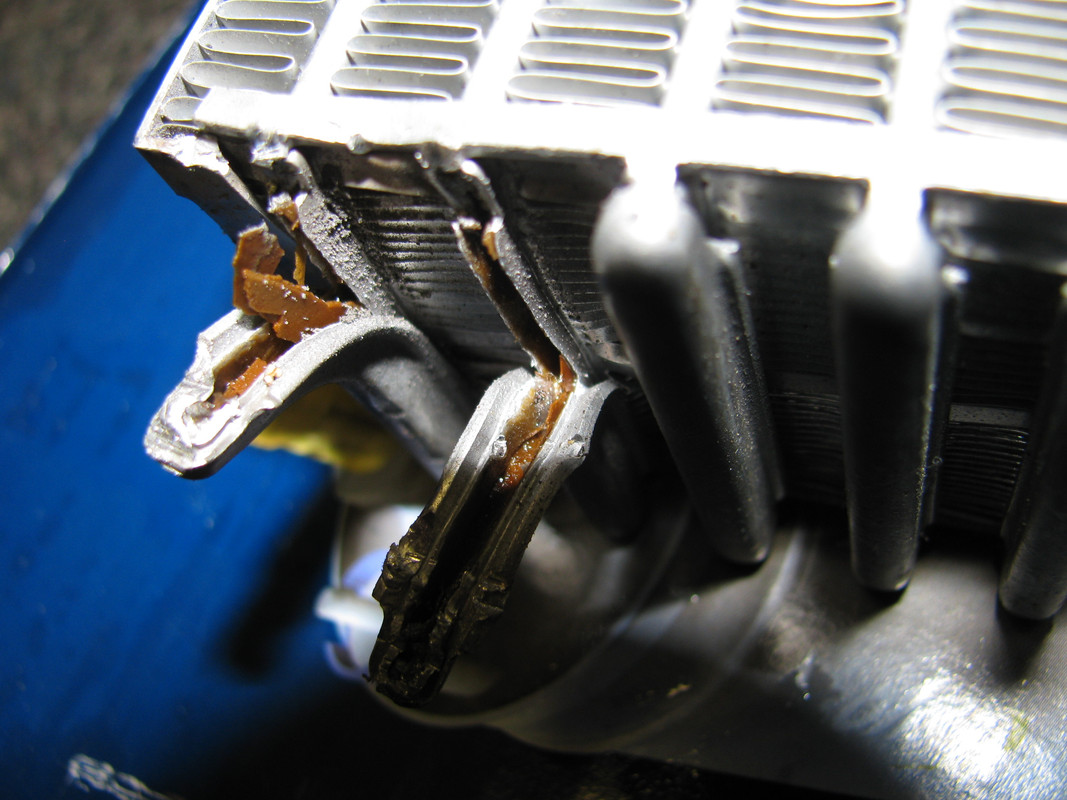I have bled the system hot. I have bled the system cold. I have bled the system with the engine running. I have bled the system with the engine off. I have flushed the heater core numerous times. I have replaced the heater core.
I have replaced the rear coolant flange. I have replaced both the lower and rear CTS. The rear at least three times. I have replaced the thermostat and the “J” plug. I am on my 4th or 5th coolant reservoir. I have tested and replaced the reservoir cap at least three times. I have performed four complete TB/water pump services. I have replace the head.
I fully understand the flow through the “small loop” and the “large loop” and how it is controlled by the mapped thermostat. I have logged the entire system numerous times with VCDS to where I know how it works and what to expect under the different conditions.
WHAT ADVICE CAN I GIVE?
If you have a 1.8T your cooling system holds 6.9 qt. (6.5 L) of a 50/50 mix of coolant/distilled water. Premix it so you know you have added enough. If you want to make sure you have drained as much as possible you are going to have to do more than just remove the lower CTS. In addition to this you will also have to remove the return line from the oil cooler as well as loosen the turbo coolant return line banjo fitting where it attaches to the block and let it drain down.
The best way to refill your cooling system (without any aids such as a vacuum fill) is to do it with a totally cold system. Open the hard pipe bleeder screw and expose the bleeder hole in the upper heater core return line. Prop the coolant reservoir up 90° from the normal position. This will increase the static pressure.
SLOWLY add the coolant into the system. (By the way, this is the procedure that Diagnosticator continually preached). And by slowly I mean take at least 20 to 30 minutes adding a very small amount at a time. When you see a steady stream of coolant coming out of the hard pipe bleeder close it. When you see a steady stream coming out of the heater core return hose bleeder push the hose back on and clamp it. Return the coolant reservoir to its proper position (don’t forget to plug the coolant level sensor back in). Put the reservoir cap back on. Done.
SO WHY DON’T I HAVE HEAT?
Well for starter the heating system in the B6 (in my opinion) is poorly designed. I posted my reasons for this statement in this thread: Clicky click®
In order to have good heat you need to maintain totally restriction free circulation through the heater core. Any air in the heater core is going to cause problems as I explained in the link. Also any sediment collecting in the crossover tubes is going to cause a problem. Especially during low flow conditions such as at idle or low engine RPM’s.
From what I have seen there are two conditions that cause restrictions in the horizontal crossover tubes. There is a scale build-up that occurs from mineral deposits and then there is a sediment build-up from rust and metal particles.
A strong chemical flush can be effective with removing the scale build-up.

But it really doesn’t have much of an effect on the sediment particle build-up.

If a chemical flush doesn’t get your heat back a heater core replacement may be your only option. I went through this cycle a few times. After about six years my heat dropped off. I flushed the system and it came back. The drop off occurred two more times. Each time a flush cured the problem but the problem came back at shorter intervals. I finally replaced the heater core. What a pain in the ass. Clicky click® But I’m glad I did because I now have excellent heat that starts coming through the vents by the time the temperature gauge reaches the first notch.
When I dissected the heater core I found that the horizontal crossover tubes were almost totally clogged up with the rust colored gunk you see above. When I removed the gunk and dissolved it in water I found that it consisted of small densely packed rust particles. It looks exactly like the particles that you see collecting in the bottom of the coolant reservoir. Apparently there just isn't enough force behind the heater core circulation to keep then from settling out on the horizontal surfaces. Once this occurs your heat will continue to drop off until it becomes altogether nonfunctional.
SOMETHING TO TRY
As I am writing this there is something that just occurred to me. One thing that may be effective would be a high pressure spray through the heater core. I never tried any more pressure than I could generate with a sump pump. The chemical flush can remove the scale but it may take mechanical rather than chemical means to remove the sediment. A high pressure blast may be just what the Doctor ordered to remove the sediment deposits. If anyone tries this please add your comments to this thread.
Happy Heating!













 Reply With Quote
Reply With Quote



Bookmarks